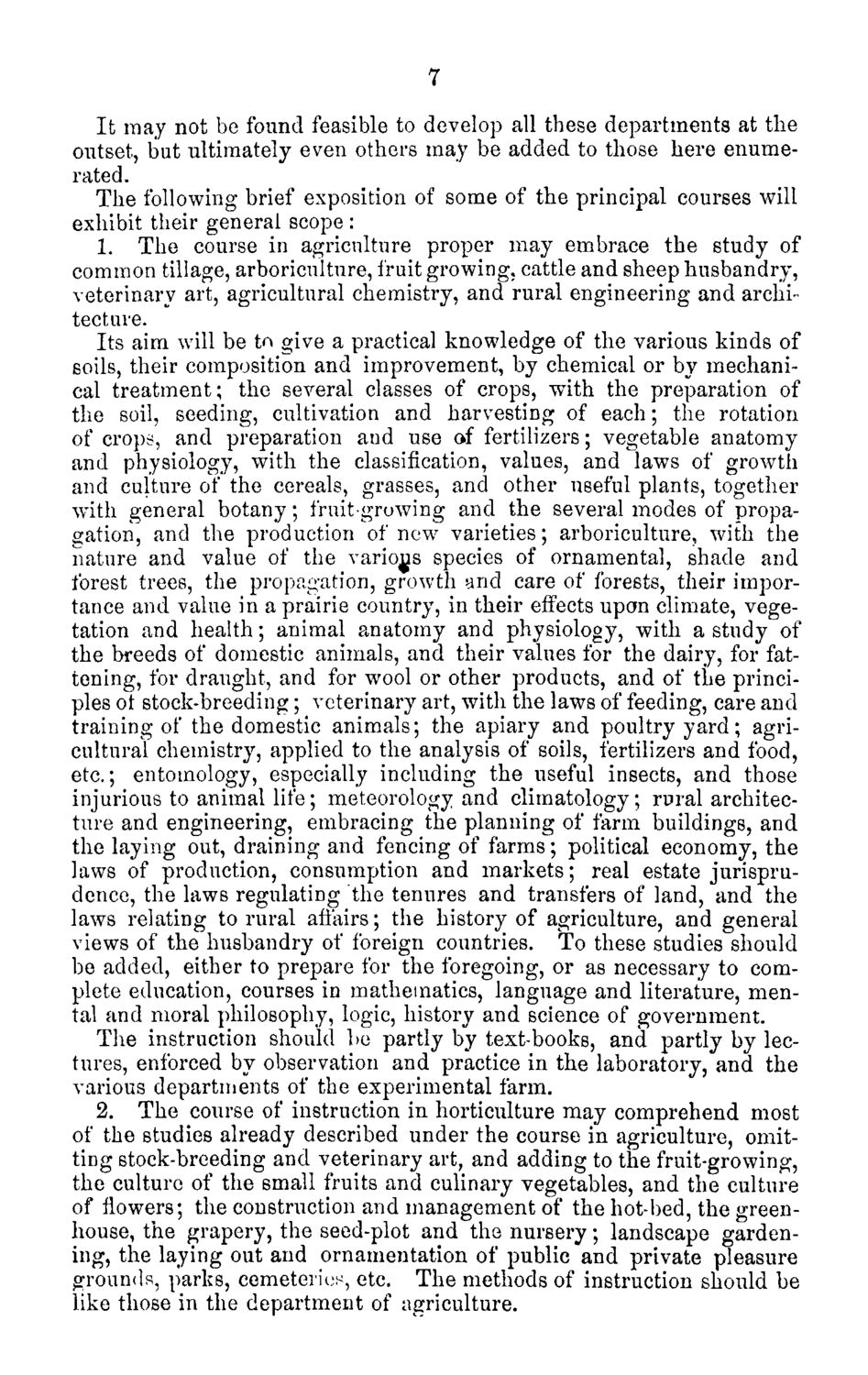| |
| |
Caption: Course Catalog - 1867
This is a reduced-resolution page image for fast online browsing.

EXTRACTED TEXT FROM PAGE:
It may not be found feasible to develop all these departments at the outset, but ultimately even others may be added to those here enumerated. The following brief exposition of some of the principal courses will exhibit their general scope : 1. The course in agriculture proper may embrace the study of common tillage, arboriculture, fruit growing, cattle and sheep husbandry, veterinary art, agricultural chemistry, and rural engineering and architecture. Its aim will be tn give a practical knowledge of the various kinds of soils, their composition and improvement, by chemical or by mechanical treatment; the several classes of crops, with the preparation of the soil, seeding, cultivation and harvesting of each; the rotation of crops, and preparation and use of fertilizers; vegetable anatomy and physiology, with the classification, values, and laws of growth and culture of the cereals, grasses, and other useful plants, together with general botany; fruitgrowing and the several modes of propagation, and the production of new varieties; arboriculture, with the nature and value of the various species of ornamental, shade and forest trees, the propagation, growth and care of forests, their importance and value in a prairie country, in their effects upan climate, vegetation and health; animal anatomy and physiology, with a study of the breeds of domestic animals, and their values for the dairy, for fattening, for draught, and for wool or other products, and of the principles ot stock-breeding; veterinary art, with the laws of feeding, care and training of the domestic animals; the apiary and poultry yard; agricultural chemistry, applied to the analysis of soils, fertilizers and food, etc.; entomology, especially including the useful insects, and those injurious to animal life; meteorology and climatology; rural architecture and engineering, embracing the planning of farm buildings, and the laying out, draining and fencing of farms; political economy, the laws of production, consumption and markets; real estate jurisprudence, the laws regulating the tenures and transfers of land, and the laws relating to rural afiairs; the history of agriculture, and general views of the husbandry of foreign countries. To these studies should be added, either to prepare for the foregoing, or as necessary to complete education, courses in mathematics, language and literature, mental and moral philosophy, logic, history and science of government. The instruction should lie partly by text-books, and partly by lectures, enforced by observation and practice in the laboratory, and the various departments of the experimental farm. 2. The course of instruction in horticulture may comprehend most of the studies already described under the course in agriculture, omitting stock-breeding and veterinary art, and adding to the fruit-growing, the culture of the small fruits and culinary vegetables, and the culture of flowers; the construction and management of the hot-bed, the greenhouse, the grapery, the seed-plot and the nursery; landscape gardening, the laying out and ornamentation of public and private pleasure grounds, parks, cemeteries, etc. The methods of instruction should be like those in the department of agriculture.
| |